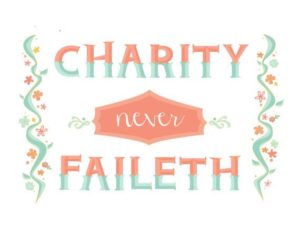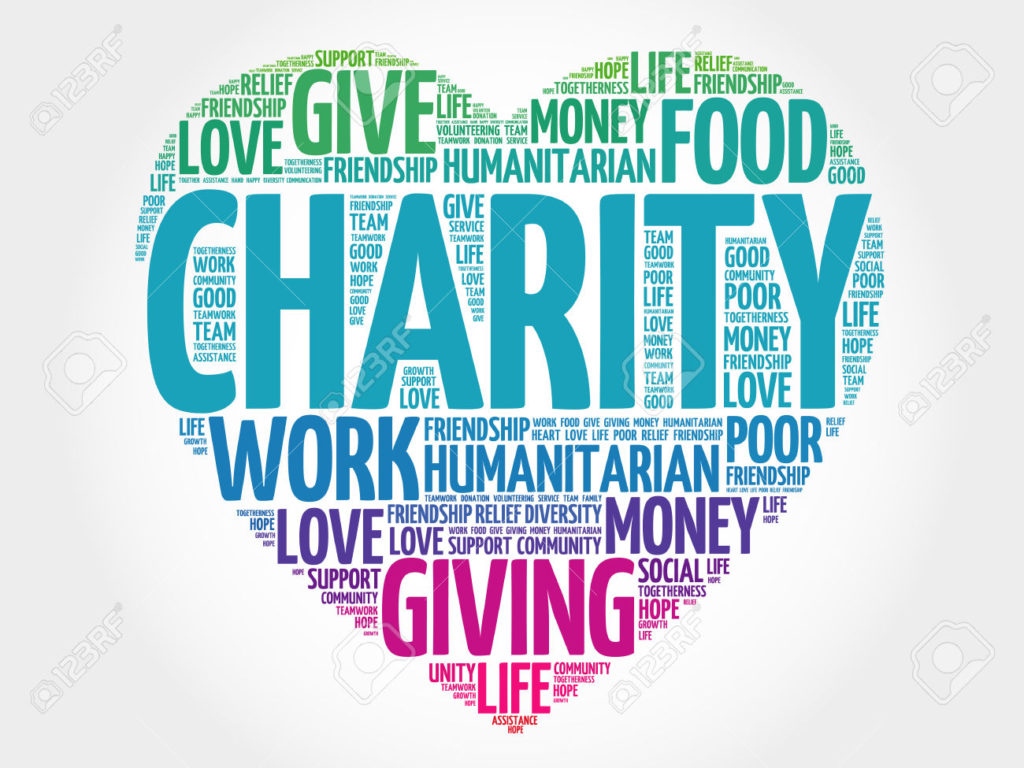Many Americans were thrilled to watch the charity funding site where Houston Texans JJ Watt started with a $200,000 goal to raise money for Hurricane Harvey victims that raced pass $20 million. That type of giving is about to go away.
One of President Trump’s campaign promises was tax reform that he suggested include drastic cuts in the almost impossible tax return preparation. Changes will probably include dropping many of the multitude of tax deductions. It is yet unknown which deductions will go and which will stay, but the two biggest and the ones that are being targeted by many in Congress are home mortgage interest deductions and charitable contributions. If contributions become no longer deductible, how will Americans respond regarding their giving? Certainly a large portion of charitable giving is spurred by its being deductible. How generous will Americans be without it?
Make no mistakes, Americans are a nation of charitable individuals and groups. And the history of giving goes all the way back to the founding of the U.S. Colonial legislatures and later State governments adopted legislation patterned after the English “poor” laws. Aid to veterans, often free grants of land, and pensions for widows and handicapped veterans, have been offered in all U.S. wars. Following World War I, provisions were made for a full-scale system of hospital and medical care benefits for veterans. By 1929, workers’ compensation laws were in effect in all but four States. These state laws made industry and businesses responsible for the costs of compensating workers or their survivors when the worker was injured or killed in connection with his or her job. Retirement programs for mainly State and local government paid teachers, police officers, and fire fighters—date back to the 19th century. All these social programs were far from universal and varied considerably from one state to another.
Prior to the Great Depression the United States had social programs that mostly centered around individual efforts, family efforts, church charities, business workers compensation, life insurance and sick leave programs along with some state tax supported social programs. The misery and poverty of the great depression threatened to overwhelm all these programs. The severe Depression of the 1930s made Federal action almost a necessity, as neither the States and the local communities, businesses and industries, nor private charities had the financial resources to cope with the growing need among the American people. Beginning in 1932, the Federal Government first made loans, then grants, to States to pay for direct relief and work relief. After that, special Federal emergency relief like the Civilian Conservation Corps and other public works programs were started. In 1935, President Franklin D. Roosevelt’s administration proposed to Congress federal social relief programs and a federally sponsored retirement program. Congress followed by the passage of the 37 page Social Security Act, signed into law August 14, 1935 and “effective” by 1939—just as World War II began. This program was expanded several times over the years.
Giving in the nation’s beginnings was taken on by individuals who gave for the immediate needs of their friends and neighbors and extended family members. Churches naturally got involved because Biblical principles are very specific about Christians taking care of those less fortunate assisting with their needs. The Great Depression changed all that and ushered in Government charity that literally created a new class within the U.S. later called the welfare state.
The welfare state is a concept of government in which the state plays a key role in the protection and promotion of the social and economic well-being of its citizens. It is based on the principles of equality of opportunity, equitable distribution of wealth, and public responsibility for those unable to avail themselves of the minimal provisions for a good life. The general term may cover a variety of forms of economic and social organization. The sociologist T.H. Marshall described the modern welfare state as a distinctive combination of democracy, welfare, and capitalism.
The welfare state involves a transfer of funds from the state to the services provided (i.e. healthcare, education, etc.) as well as directly to individuals (“benefits”). It is funded through re-distributionist taxation and is often referred to as a type of mixed economy. Such taxation usually includes a larger income tax for people with higher incomes, called a progressive tax. Proponents argue that this helps reduce the income gap between the rich and poor.
Social programs in the United States are welfare subsidies designed to aid the needs of the American population. Federal and state welfare programs include cash assistance, healthcare and medical provisions, food assistance, housing subsidies, energy and utilities subsidies, education and childcare assistance, and subsidies and assistance for other basic services. Private provisions from employers, either mandated by policy or voluntary, also provide similar social welfare benefits.
 The programs vary in eligibility requirements and are provided by various organizations on a federal, state, local and private level. They help to provide food, shelter, education, healthcare and money to U.S. citizens through primary and secondary education, subsidies of college education, unemployment disability insurance, subsidies for eligible low-wage workers, subsidies for housing, Supplemental Nutrition Assistance Program benefits, pensions for eligible persons and health insurance programs that cover public employees. The Social Security system is sometimes considered to be a social aid program and has some characteristics of such programs, but unlike these programs, social security was designed as a self-funded security blanket – so that as the payee pays in (during working years), they are pre-paying for the payments they’ll receive back out of the system when they are no longer working. Medicare is another prominent program, among other healthcare provisions such as Medicaid and the State Children’s Health Insurance Program.
The programs vary in eligibility requirements and are provided by various organizations on a federal, state, local and private level. They help to provide food, shelter, education, healthcare and money to U.S. citizens through primary and secondary education, subsidies of college education, unemployment disability insurance, subsidies for eligible low-wage workers, subsidies for housing, Supplemental Nutrition Assistance Program benefits, pensions for eligible persons and health insurance programs that cover public employees. The Social Security system is sometimes considered to be a social aid program and has some characteristics of such programs, but unlike these programs, social security was designed as a self-funded security blanket – so that as the payee pays in (during working years), they are pre-paying for the payments they’ll receive back out of the system when they are no longer working. Medicare is another prominent program, among other healthcare provisions such as Medicaid and the State Children’s Health Insurance Program.
Here’s my fear: even though not-for-profit charities are abundant, most of which are stewards of their resources and amazingly resourceful and responsive to the needs of others, their services will necessarily decline as their revenue declines. On local and regional levels, national charities like the Red Cross, Salvation Army, Samaritans Purse and many others that are always on the spot to help, even during times of need for Americans that are not disaster related. But each of those charities and almost all others are dependent on contributions. Currently those contributions are almost all tax deductible. If Congress passes a bill that becomes law dropping charitable giving as a tax deduction, will the willingness of Americans to give be diminished? I am certain a large drop in giving will occur, but to what extent is unknown. But there may be an underlying reason why many want to see this happen. Why?
Who steps in when there are no 501-C(3) charities to take care of people? The Government. Where does the Government get funds to help people in the ways detailed above? From Americans. Although Americans are the most giving people on Earth, Americans have very little confidence in the financial viability of the Government. Taxes would have to be raised to fill in the gap that would open IF charitable giving becomes no longer deductible. What would fill in that gap? Raised taxes collected from Americans.
Look back up at the “Great Depression” paragraph above. The depth of financial devastation to Americans in the Great Depression forced the Federal Government to dive deep into social programs in the welfare state. And they have never pulled back.
That is the problem. Once the U.S. Government historically gets involved in any type of welfare program as discussed above, Americans become expectant of the benefits of each of those programs. Americans re-program their lives based on income and benefits received from those programs. We have seen the national mutiny when any such program’s reduced funding or its continuation are even discussed. “The Government gives but the Government CANNOT take away.”
Just like the furor over possibly terminating Obamacare. Americans who have been given healthcare subsidies to help pay for Obamacare premiums adjust their lives accordingly. Talk about taking those subsidies away because the program is failing sets their hair on fire. Bottom line: they don’t care who pays for that subsidy loss to them. They simply demand someone else pay it.
Watch this tax reform discussion and debate over the next few months. When major deduction termination is discussed, there will be uproar from those who are givers. And they will be forced to adjust their lives financially which will include less giving. Those who do not make contributions will be affected very little if at all. But when discussions open about welfare program changes that include reductions in benefits and/or funding, all hell will break loose. Why? We now live in a welfare state.

